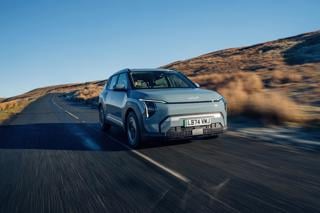By Harvey Perkins, director of HRUX
Everywhere you look it seems that electric cars are becoming more common.
And while this is undoubtedly a good thing, it brings with it its own problems.
One of these is reimbursing employees for the electricity they use for business miles and that it is proving extraordinarily hard to manage.
No matter what anyone tells you, nobody yet seems to have a magic bullet to solving this.
So, what is the issue?
Petrol prices today range from around £1.40 a litree to over £1.75 – around a 25% variance.
However, by comparison, electricity ranges from 0p to 95p per KWh – so reimbursement could vary by hundreds of percentage points.
Both types of car see different levels of energy consumption depending on factors such as vehicle efficiency, driving style and the types of journeys.
For traditional internal combustion engine cars, HMRC give us a number of different pence per mile rates depending on fuel type, cylinder capacity, etc, called the Approved Fuel Rate (AFR).
People moan from time to time that it’s not sufficient, but it is broadly in the ballpark for most of us, most of the time.
For electric cars we only have the Approved Electricity Rate (AER) and that’s currently 9p per mile regardless of battery capacity or efficiency of the vehicle.
It follows that the single rate of 9p represents a very broad-brush approach (broadly equivalent to charging at around 30p a KWh).
It’s actually more than some need, but arguably less or much less than most need. If you are only managing 2.5 miles/KWh, on average, and paying 65p a KWh for charging (on average) you need 17p a mile.
The reality is that what you pay for electricity is going to vary considerably through a typical working week, for example:
Diane’s car has a 280-mile range and she charges it overnight using a 7.5kWh “smart” home-charger at the equivalent of 3p per mile.
She drives to Dundee for a business meeting. She stops en route and charges the car for the equivalent 15p per mile, using a supercharger.
She then spends that night in a hotel and charges on-site for free.
Next day she drives home but stops off when the charge gets low to top it up to 80% of full charge at a more reasonable 11p per mile.
That night she plugs it in to charge but it only takes 80 miles worth to top it back up, and the next day it’s the weekend and it is all private mileage (using the electrons that cost 11p a mile for the first 200 miles).
What rate should we reimburse her at for the business journey? Anyone?
With petrol the big variable is the MPG you achieve, but with EV it’s the price you pay for electricity that has by far the biggest impact.
In defence of AER
In defence of AER, I have some sympathy for HMRC.
Their argument has always been that employers can use any rate for tax-free business mileage reimbursement, for a company car, as long as you can evidence that it’s appropriate.
Industry bodies pushed for a fixed fuel reimbursement rate for company cars.
From memory HMRC pushed back, maintaining the flat rates would be hard to for them to administer, would often be out of date and would create winners and losers. But we persisted and they gave us a rate.
Scroll forwards to the introduction of electric company cars, and the industry lobbied again and HMRC created an AER.
Again, the same debate is now had about AER and HMRC had the same reservations, but again we made them do it.
If you argue that the rate isn’t sufficient, they’ll remind you that you can pay what you want as long as you can evidence that it’s a fair payment to reimburse business expenses only.
So what do you do? We start with some high-level principles:
Simple is usually best. The harder you work to pay an employee’s real electricity cost, the more complicated the solution will be, the more manual and multiple inputs may be needed. There’s a complexity continuum here – with AER on the far left (simple but potentially unfair) and true reimbursement on the right (complex but fair). The answer for many is likely to be somewhere in the middle.
Encourage good behaviours. If you pay for the most expensive electricity your employees will use it and your costs will be hundreds of times higher than they would have been – remember there is a much greater risk of that with EV than petrol because of the huge range of potential prices.
As a side point – on PHEVs you can structure reimbursement to ensure employees charge at home where they can.
HRUX has been engaged to liaise with HMRC to agree higher fuel reimbursement rates for many clients who see the 9p as being too low or too simplistic.
We’ve broadly worked on two basis:
- where we agree a higher blanket rate (than the current 9p AER) that will be applied across the board AND
- where we agree a methodology to pay different rates to different employees based upon data feeds including
- home smart charger feed
- charge card feeds
- business mileage claims
In both cases we worked on a sample of employee actual mileage and electricity spend data for a given period.
We’d argue the data sample and duration of collection needs to be representative and meaningful.
Where you deviate from HMRCs approved rate, the onus is on you, the employer, to get it right.
If HMRC pick up errors on a later compliance visit, they can argue that any excess reimbursement to the employee was both taxable and NICable and should have been subject to PAYE with significant associated penalties and interest charges.
If that happens you may find yourself wondering what was wrong with 9ppm...























EV_DRIVER - 31/08/2023 12:25
The articles quotes some figures that is simply not true anymore, like Diane’s car has a 280-mile range and she charges it overnight using a 7.5kWh “smart” home-charger at the equivalent of 3p per mile. - The cheapest you can get right now is 9p with octopus intelligent tariff which doesn't apply to all EVs. So a standing charge of 23p or higher will be more realistic assumption. She drives to Dundee for a business meeting. She stops en route and charges the car for the equivalent 15p per mile, using a supercharger. - I am yet to come across a super charger which pumps electricity at 15p per mile, its more like ±23p per mile. She then spends that night in a hotel and charges on-site for free. - I want to stay in this hotel, where is this hotel in Dundee giving free electricity? Can we all stay there and charge our car? Next day she drives home but stops off when the charge gets low to top it up to 80% of full charge at a more reasonable 11p per mile. - Again, not sure which charger tops up at 11p or 33p/kwh.